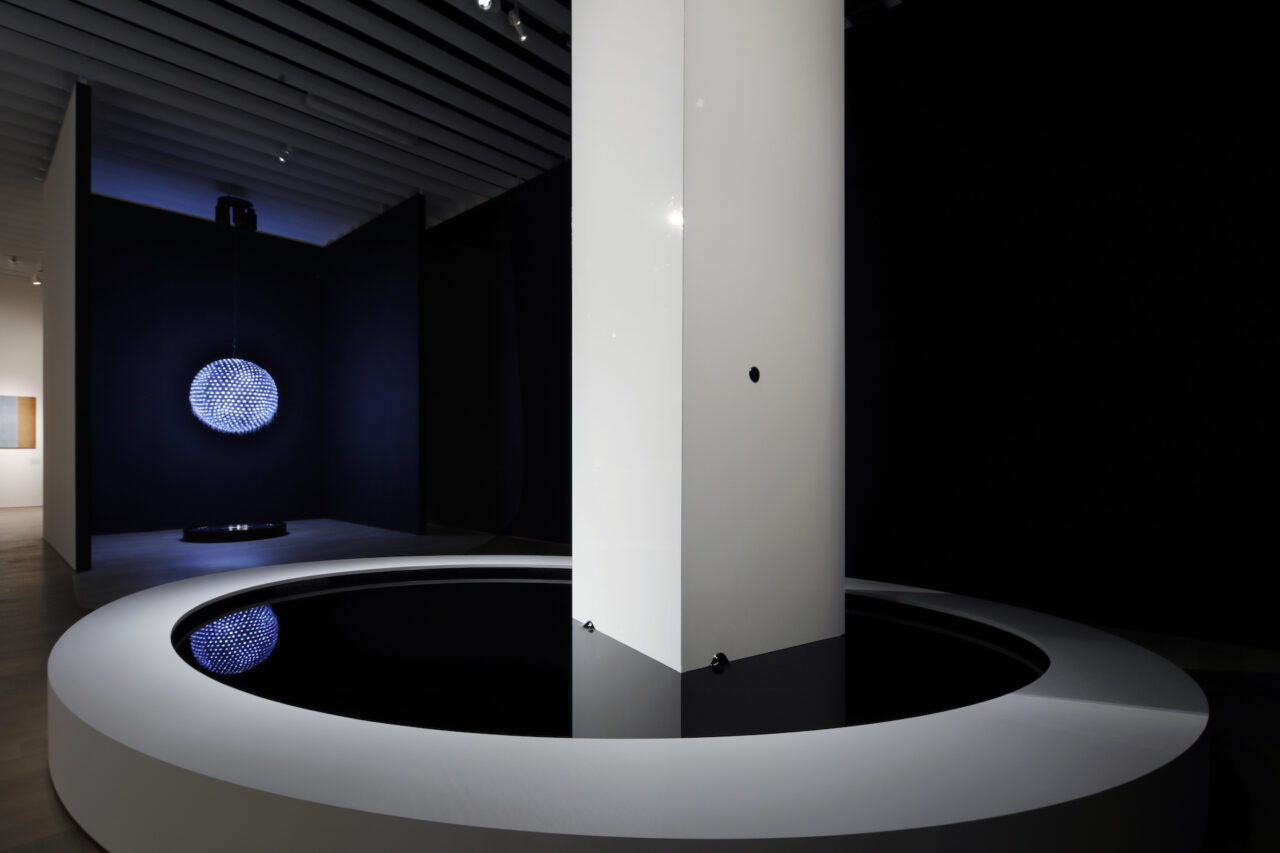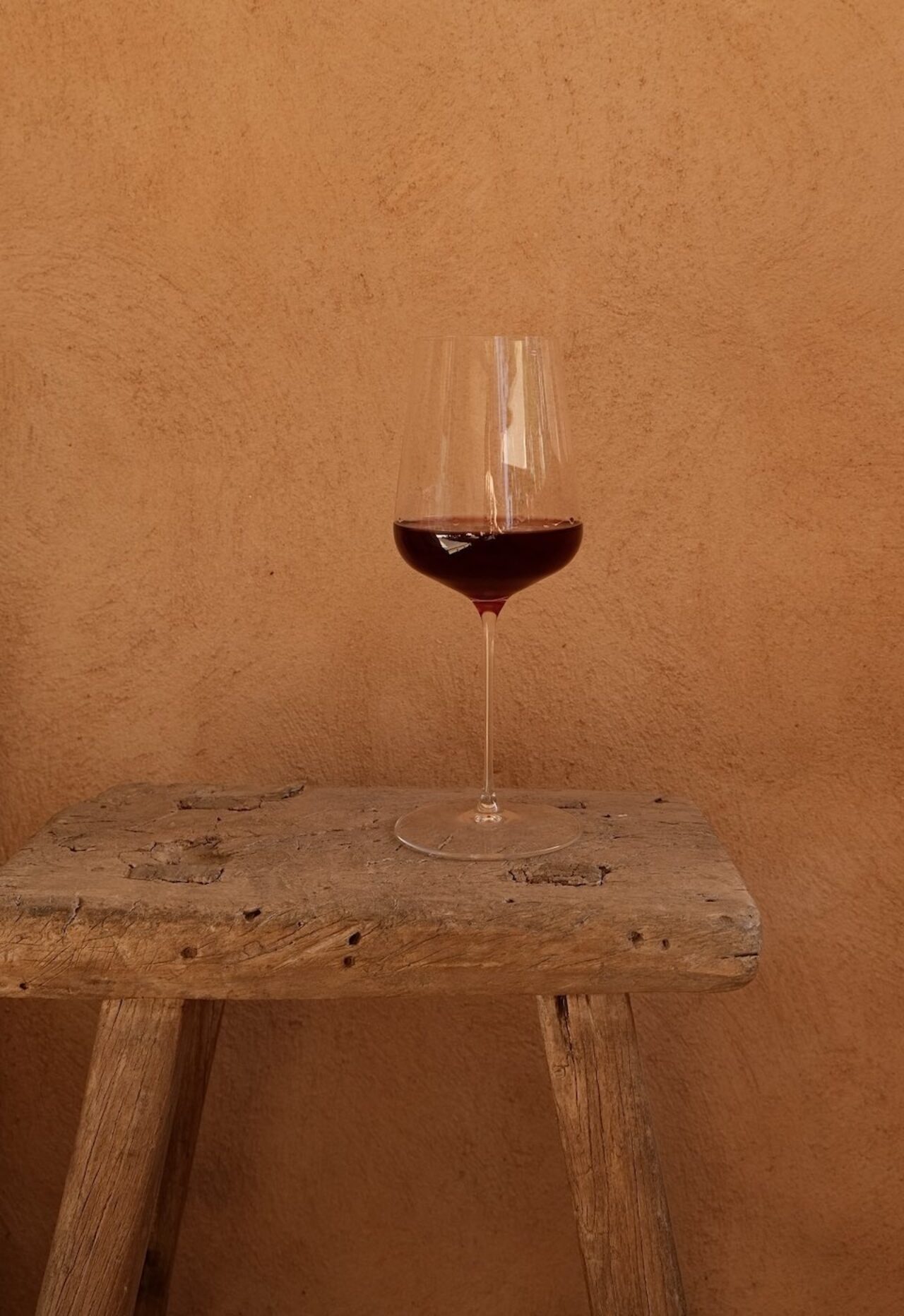HOSHINOYA Karuizawa
Where Nature, Architecture, History & Sustainability Align
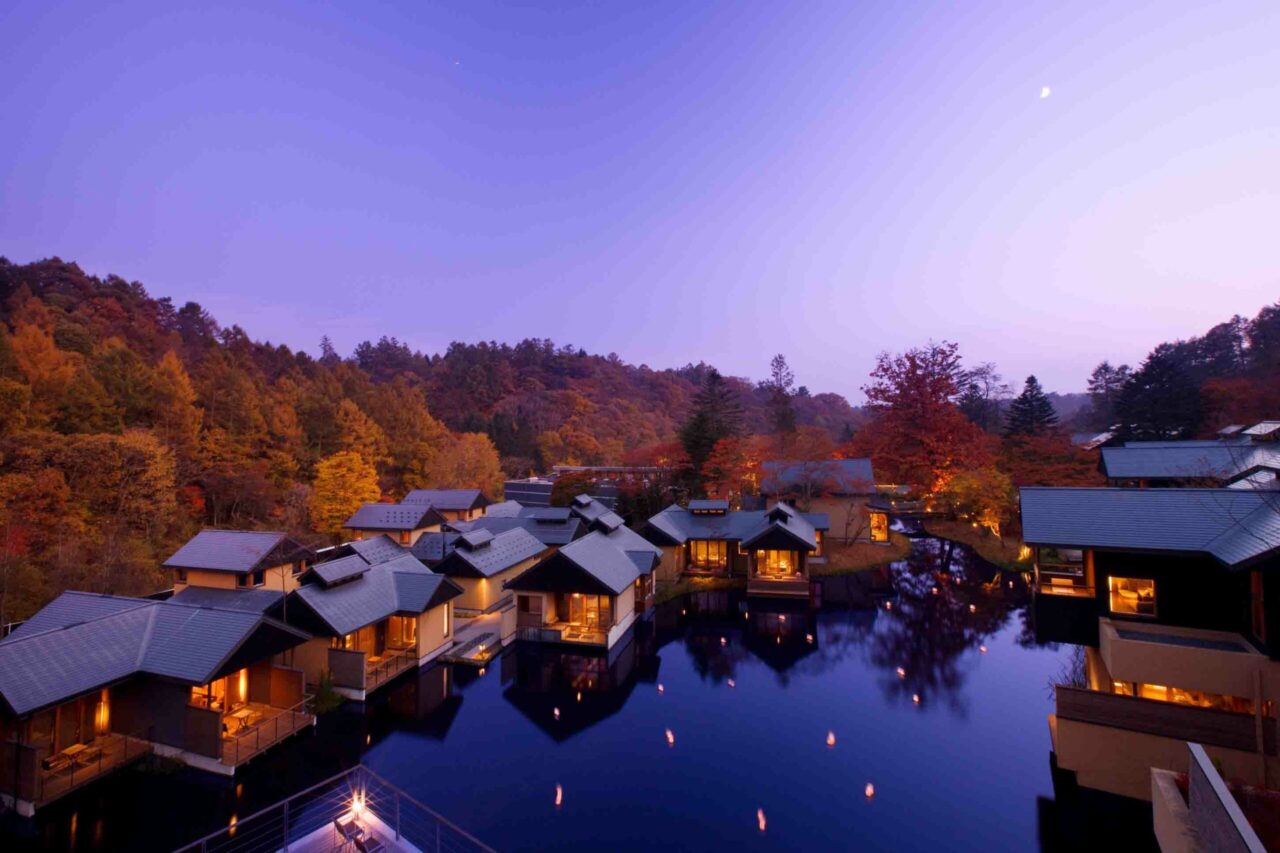
As the very first property of Hoshino Resorts, the site of HOSHINOYA Karuizawa holds a world of history that begins with founder Kuniji Hoshino who solidified a legacy in 1904 that continues to this day. Originally established as a hot spring ryokan in 1914 and redeveloped with the official title of HOSHINOYA Karuizawa in 2005, now almost 20 years later, the hotel remains a calm and tranquil luxury respite away from the density of the city and urban chaos.
Located around 20 minutes by taxi from Karuizawa Station — just an hour by shinkansen bullet train from Tokyo — guests find themselves arriving to a nature-abundant vista surrounded by native trees, local wildlife and rushing natural spring water ways. The region’s active volcano, Mount Asama, is a respected, spectacular icon — particularly in winter covered in snow and likened to Mount Fuji.
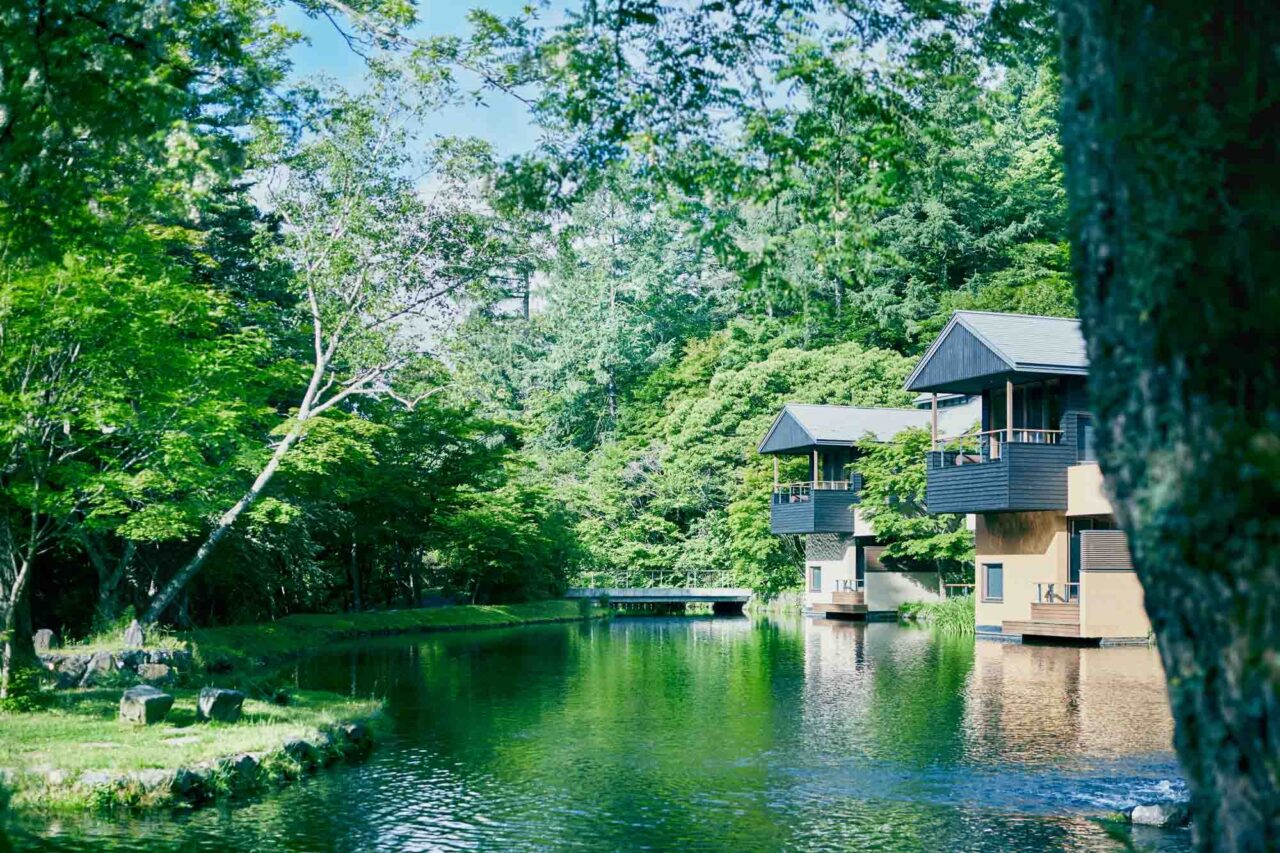
HOSHINOYA Karuizawa features a series of buildings housing the main reception, restaurant, hot spring bath, and a cluster of 77 guest houses across a landscape informed by its orientation, notably utilising sustainable energy resources — such a hydro power and geothermal energy — throughout the property. Designed by HOSHINOYA long-term architectural collaborator Rie Azuma, each structure features tall ceilings and segments of floor-to-ceiling glass windows that offer panoramic views of the external landscape.
Surrounded by native forests and local holiday houses, the complex finds harmony as an all-season destination. With a concept to ‘Stay in the village of the valley’, guests can revel in the abundance of nature without leaving the site, enjoying the beauty of the passing seasons by Tanada Terrace, the hotel’s central garden and patio space with a design inspired by tiered rice fields, that sees interconnected ponds and flowing water contained within moss-covered hand-laid exquisite stonework. Hotel activities include a Morning Stretch Session, a ceramic class, Warm Eye Care workshop (where guests can create their own eye masks) .
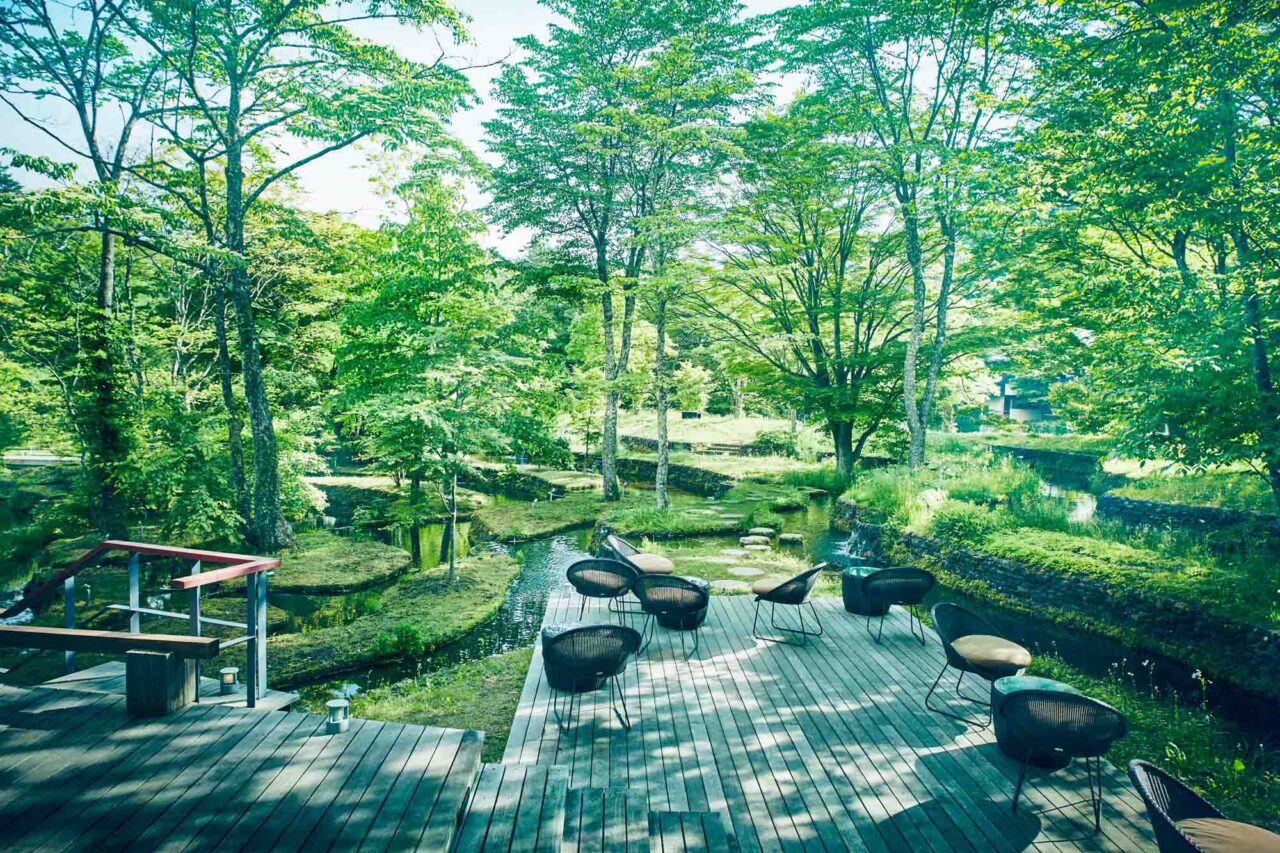
On the outer rim of the property, guests can enjoy the glowing river Yu no Kawa, named for the onsen hot spring water that formerly flowed beneath and was the origin of some of the hotel’s natural stones found throughout the site. Neighbouring holiday houses are nestled within the locale, including Harunine Terrace, a quaint cluster of restaurant, boutique craft stores and bakeries, retaining a sense of connectedness and community. It is this local connection and integration within the nearby community that makes HOSHINOYA Karuizawa so embedded through its history and local contributions.
Upon arrival to HOSHINOYA Karuizawa, guests are greeted in the main building and transported to a small pavilion about five minutes drive by courtesy (electric) car. The pavilion is intended as a conceptual transition between the outside world and HOSHINOYA Karuizawa, where guests can truly feel immersed in entering the new atmosphere, welcomed by a sound meditation bath enveloping guests in the sublime sounds of the Orient merging sounds from across Japan, Malaysia and China.

GUEST ROOMS
With a focus on wellbeing, guest rooms designed by architect Rie Azuma feature a calming palette of brown and cream tones, that allows the large windows framing the outside landscape in the expansive rooms to shine. Designed as a cluster of small villas, the rooms feature generous, tall ceilings that were intentionally designed to provide natural ventilation in warmer months (a nod to traditional Japanese timber architecture and homes). Heated floors, corner lounges and a hinoki wooden bath create a cosy atmosphere for any cooler season.
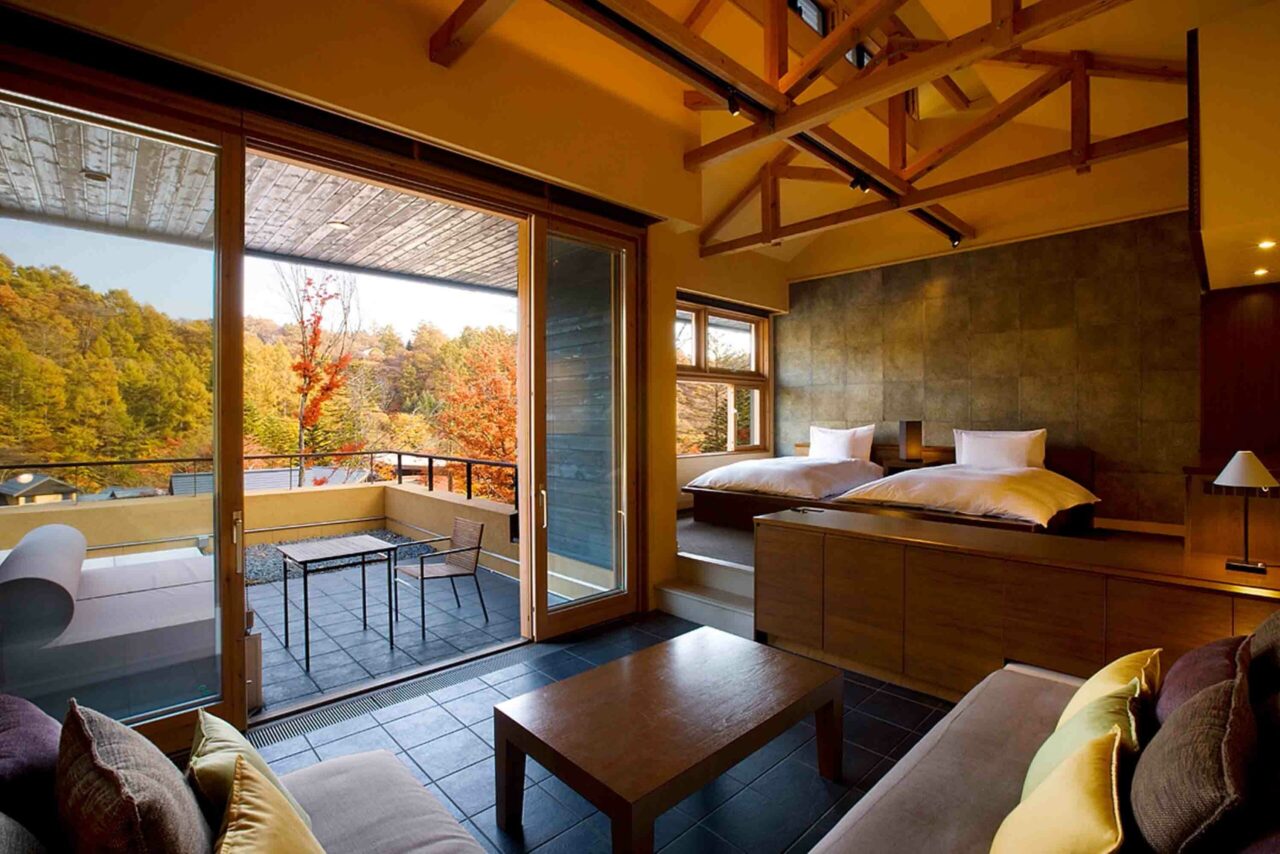

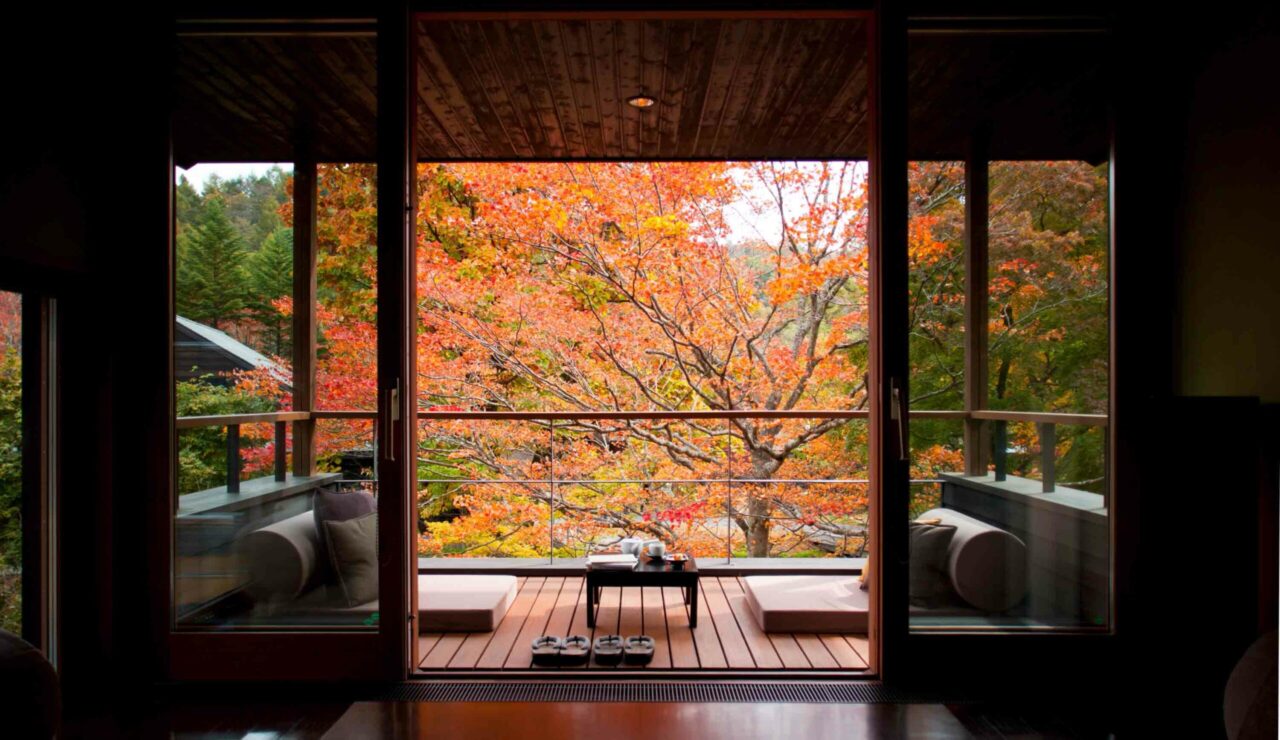
HOT SPRINGS
Guests of HOSHINOYA Karuizawa can utilise both the on-site natural hot spring onsen bath known as the Meditation Bath, and the neighbouring Hoshino Onsen Tombo-no-Yu just a five minute walk by foot. Tombo-no-Yu features an indoor bath and a second outdoor open-air bath designed with spectacular stonework and a calming view of neighbouring trees reflecting the passing of the seasons. The bath is exclusively open to hotel guests each morning from 9-10am, where they can bathe in privacy without outside guests.
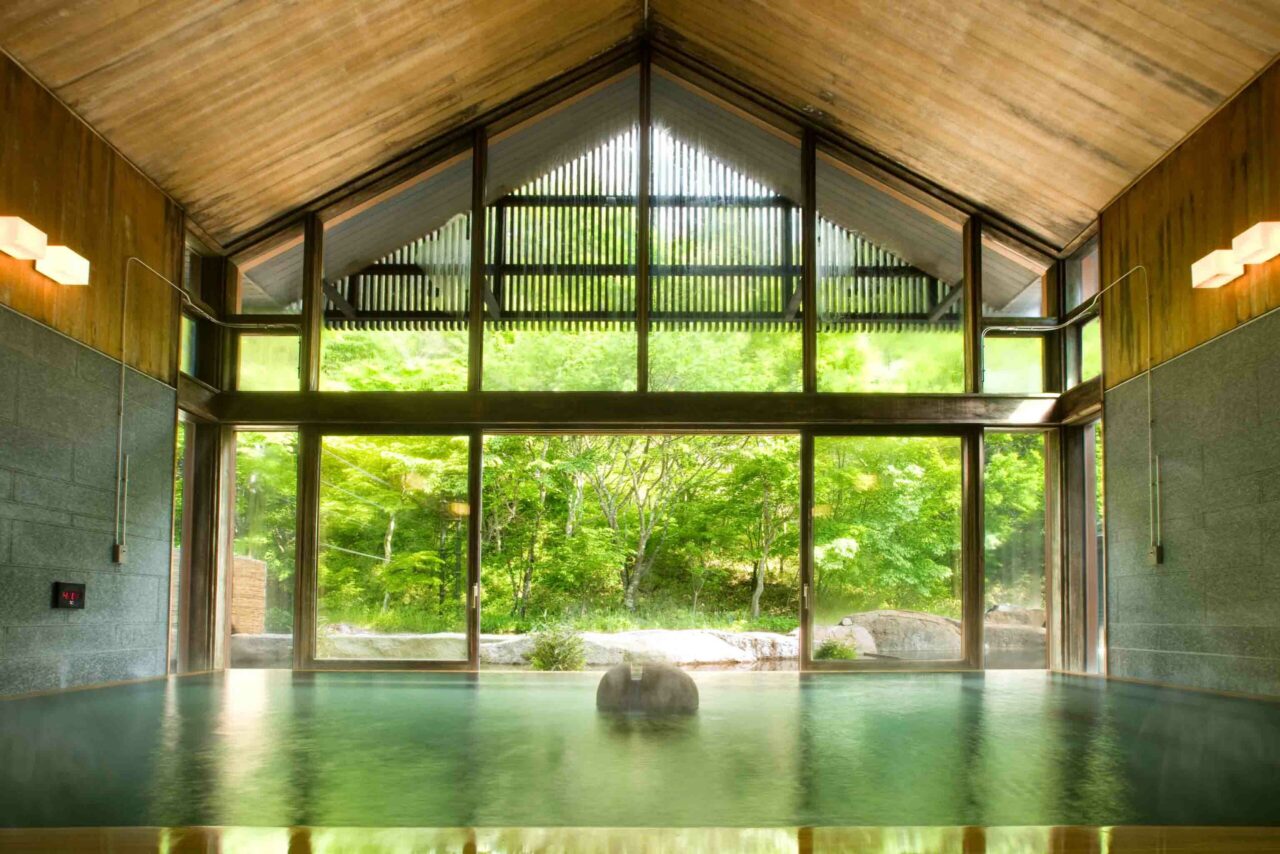

The on-site Meditation Bath indoor hot spring, designed by architect Rie Azuma, is a sublime and spiritual space due to the overwhelmingly tall ceilings in the first bath referred to as Hikari no Heya (illuminated naturally by day, and gentle artificially by nature), and a second cave-like space Yami-no-Heya offering complete darkness. Reminiscent of Peter Sumthor’s Thermal Baths in Vals, the enclosed spa, sauna and bath areas allows guests to leave all thoughts outside and truly acclimatise to the calm interior inspiring contemplation and relaxation.
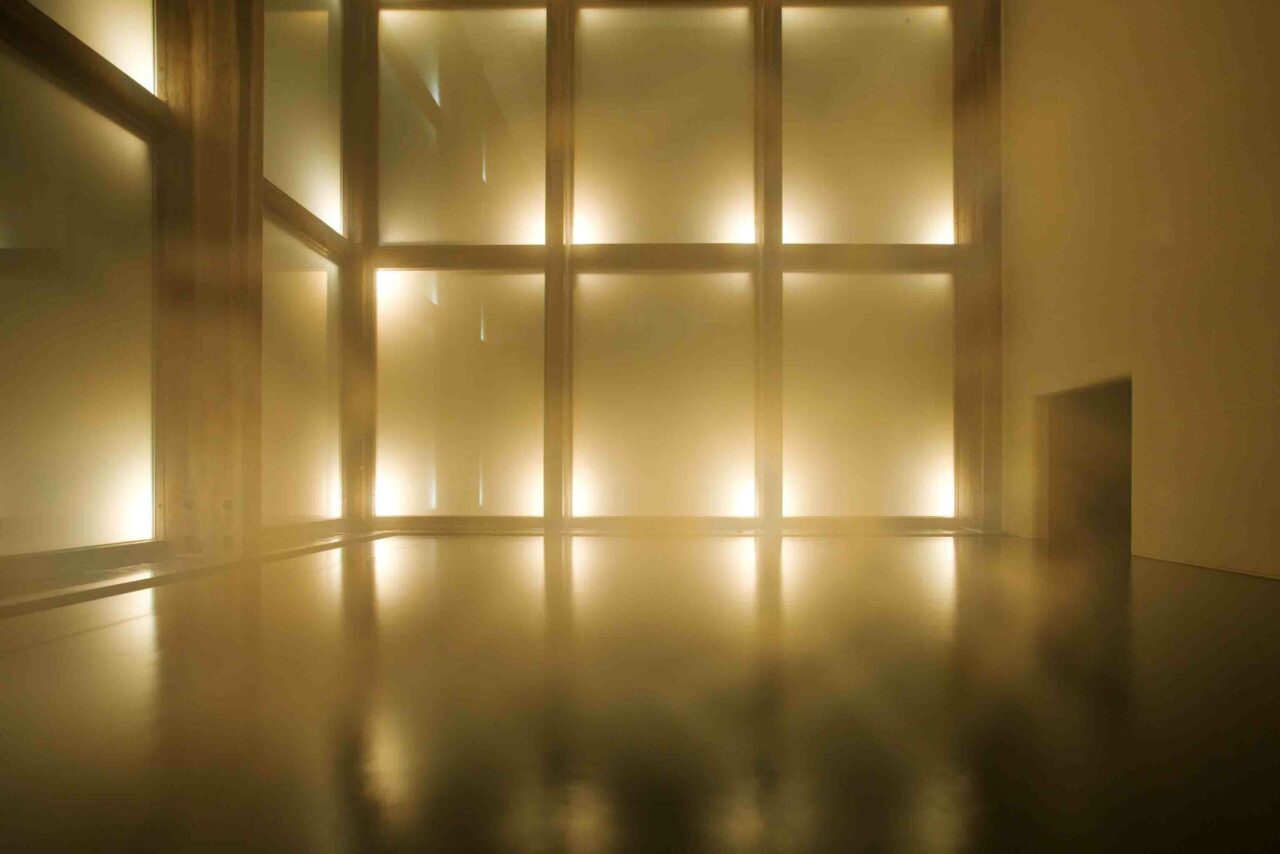
DINING
HOSHINOYA Karuizawa’s main site dining facility, Kasuke, is located inside the main building and hosts evening course dining and hotpot alongside breakfast in the mornings charmingly referred to as Alpine Cuisine. Overlooking the main terraced garden, guests witness the seasonal beauty both on the plate and outside. Kasuke Executive chef Yoshihiro Ishii — who also oversees HOSHINOYA Kyoto’s dining — leads a menu that is distinctly rooted in locality whilst showcasing the best of Japan’s coastal produce.
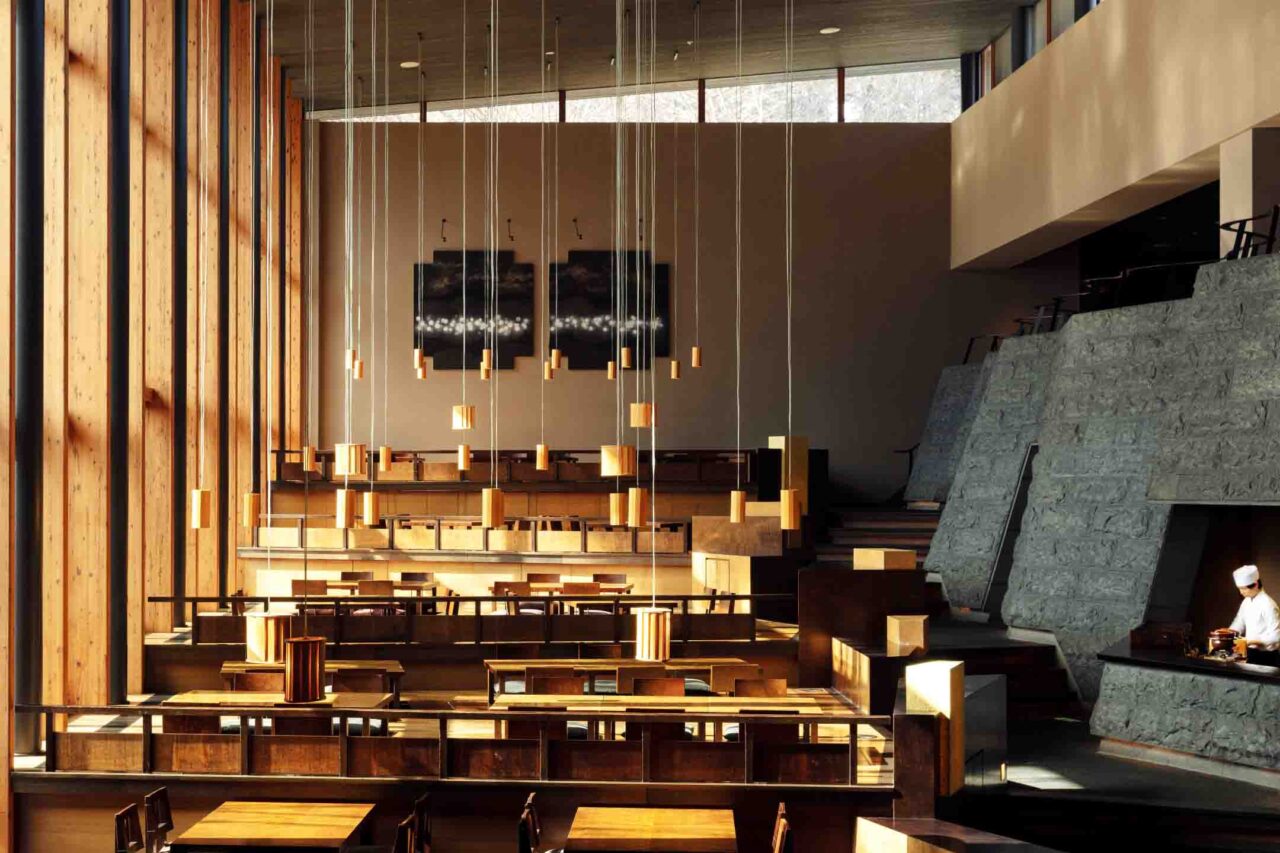
Kasuke’s seasonal course menu by chef Ishii is a fully-formed dining journey. For the ‘Early Spring’ dinner course, enjoy Abalone from Mie (perfectly paired with balsamic sauce and abalone mushroom), to a sublime ‘Mountain Soup’ featuring a deer and chicken dumpling (nestled within its own extracted broth) covered by silky smooth mochi and seasoned with shichimi (seven spices), highlighting the beauty of local gaming meat.
The following sashimi dish reflected ingredients from ‘Mountain to Ocean’, pairing uni sea urchin from Nagasaki with tonburi from the kokiya hoki tree, a unique type of small seed referred to as ‘land caviar’ for its visual likeness to caviar eggs. Slices of tuna, barracuda and sea bream were also presented with koi river fish and paired with the Bonfuu mountain plant served with sour miso (made in-house with egg yolk) and local Nagano wasabi — simply delicious.
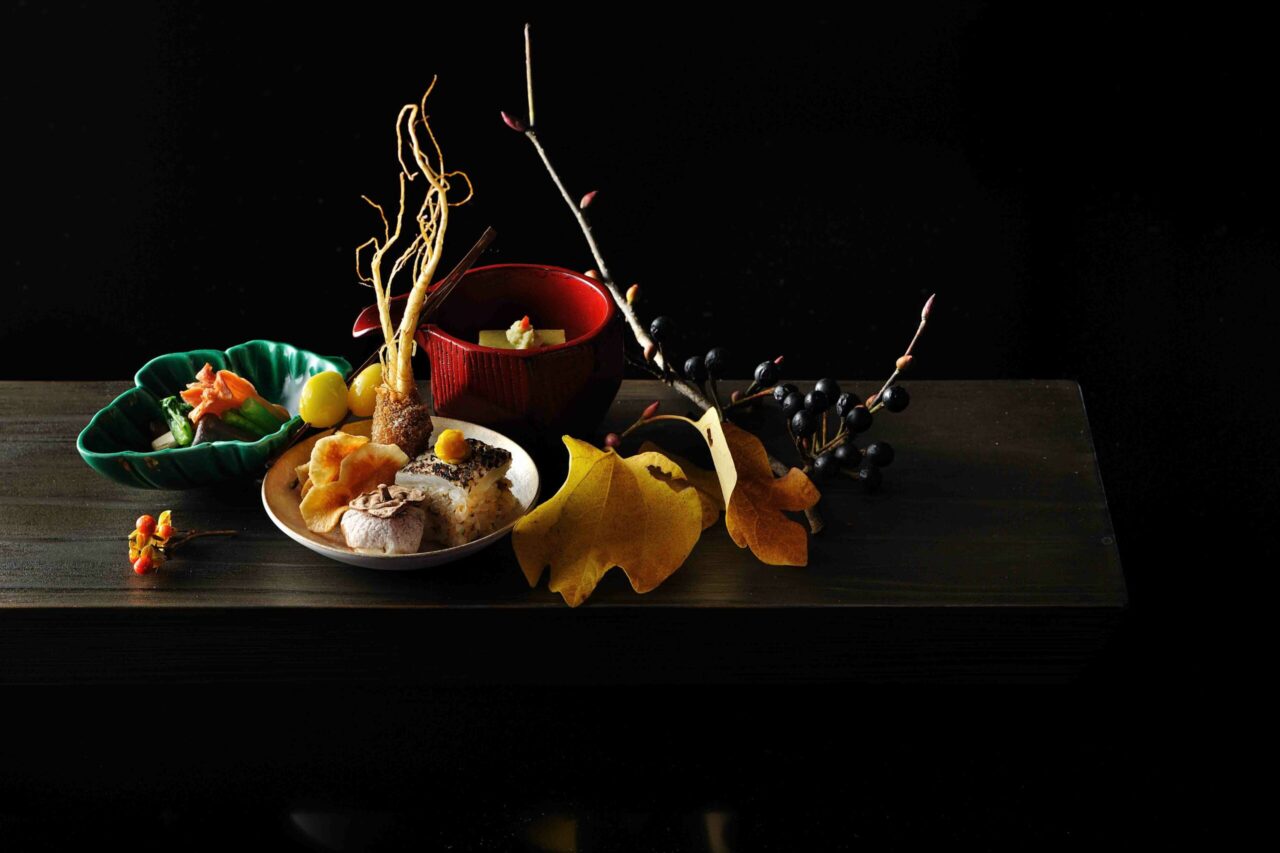
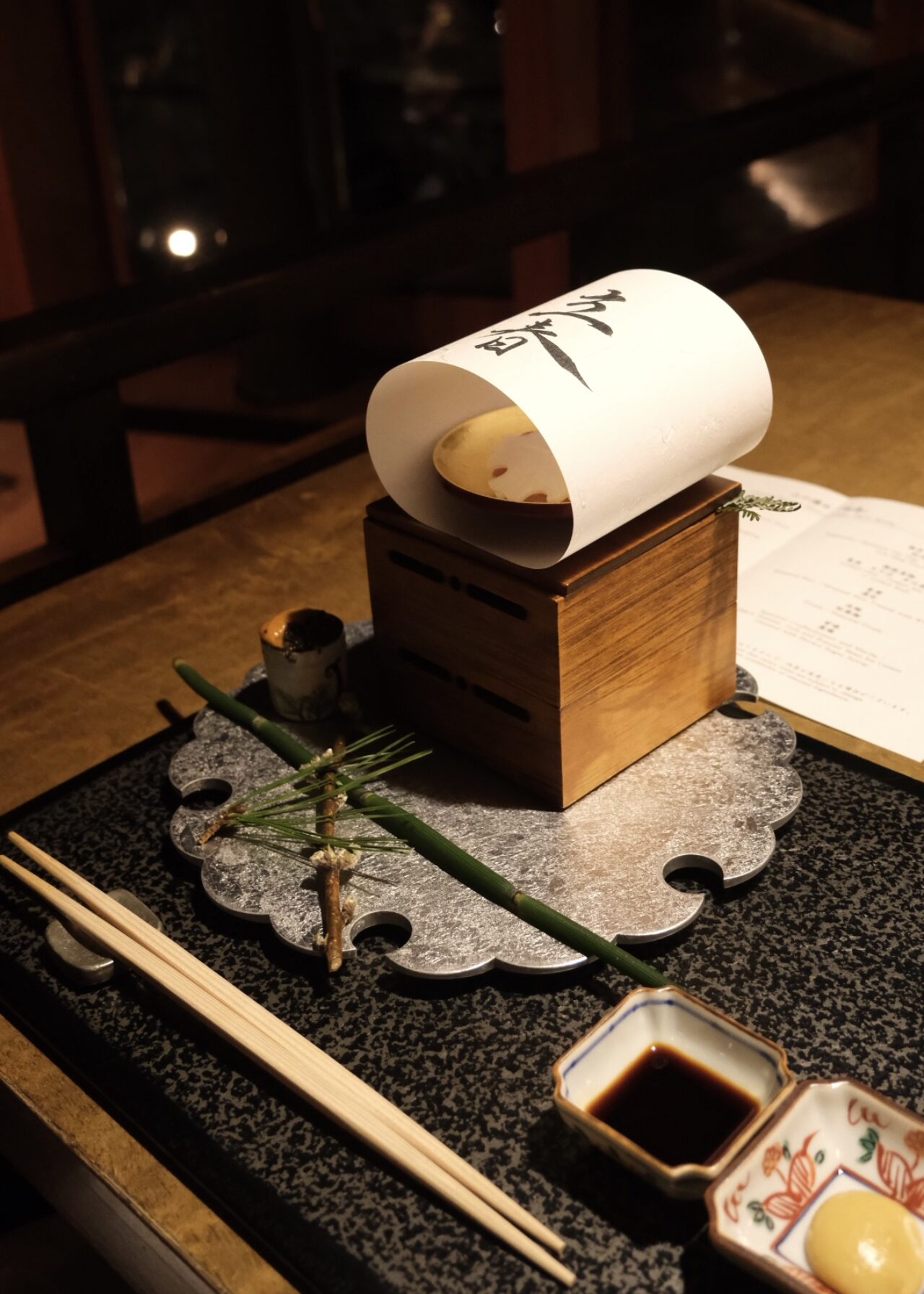
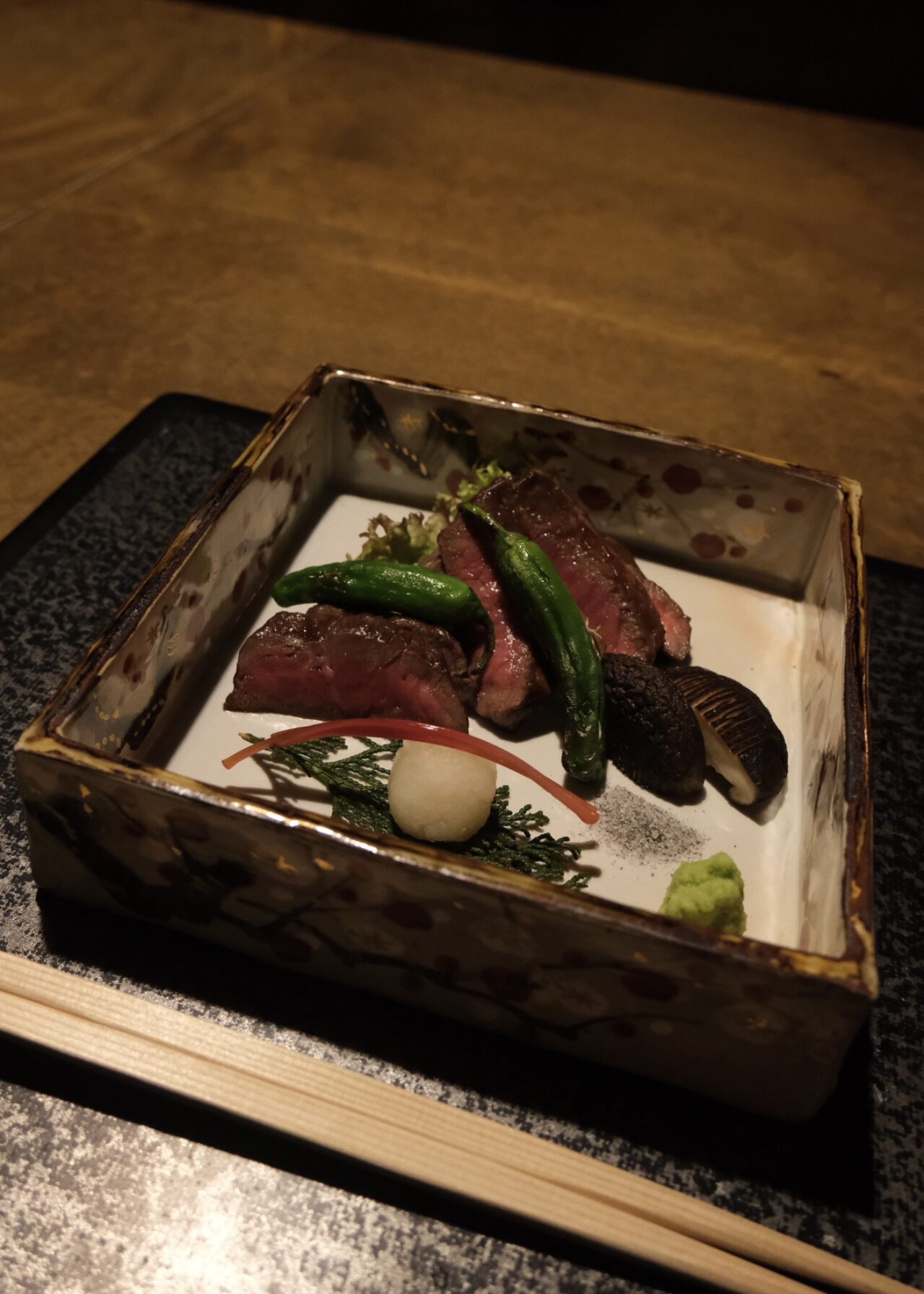
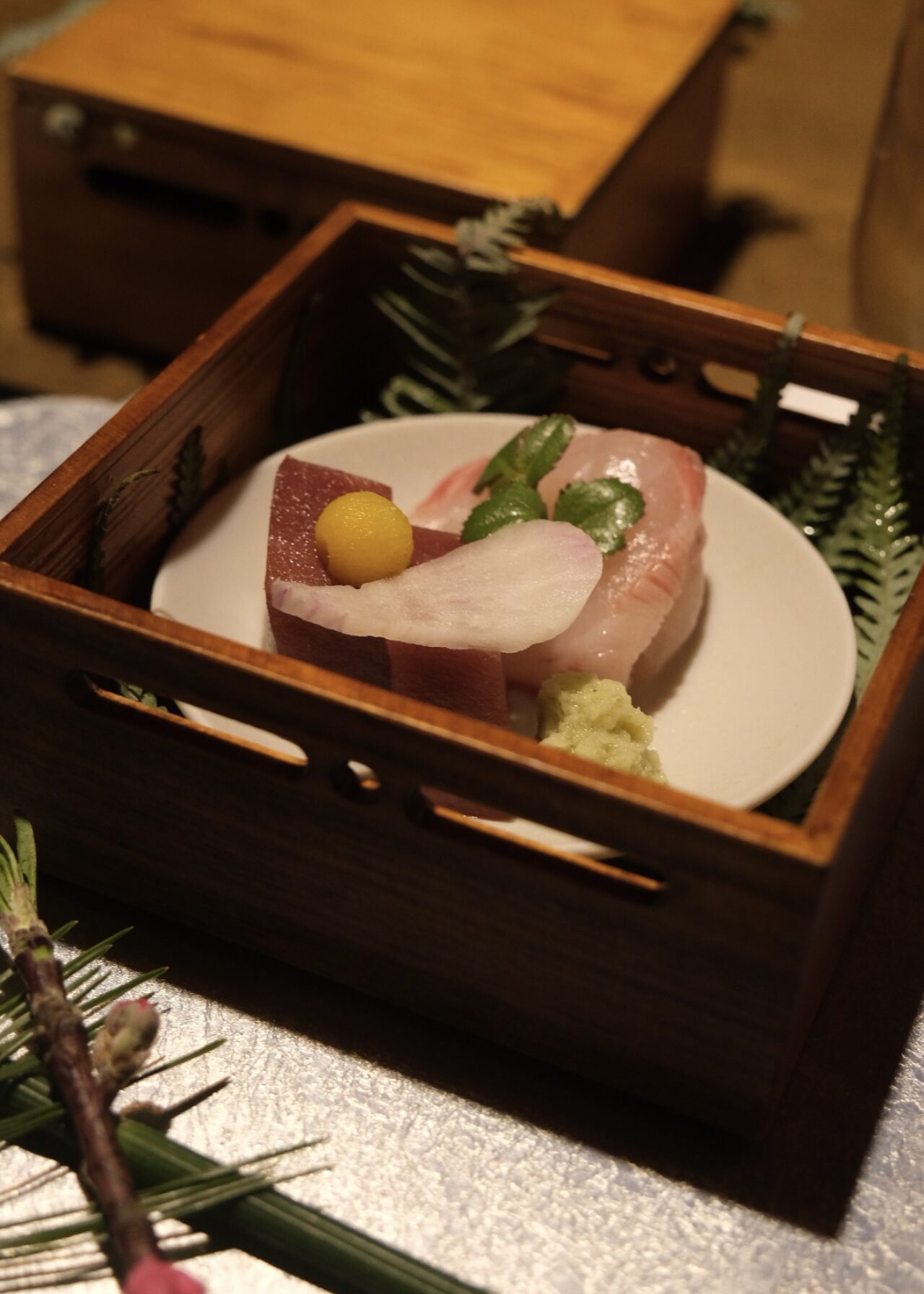
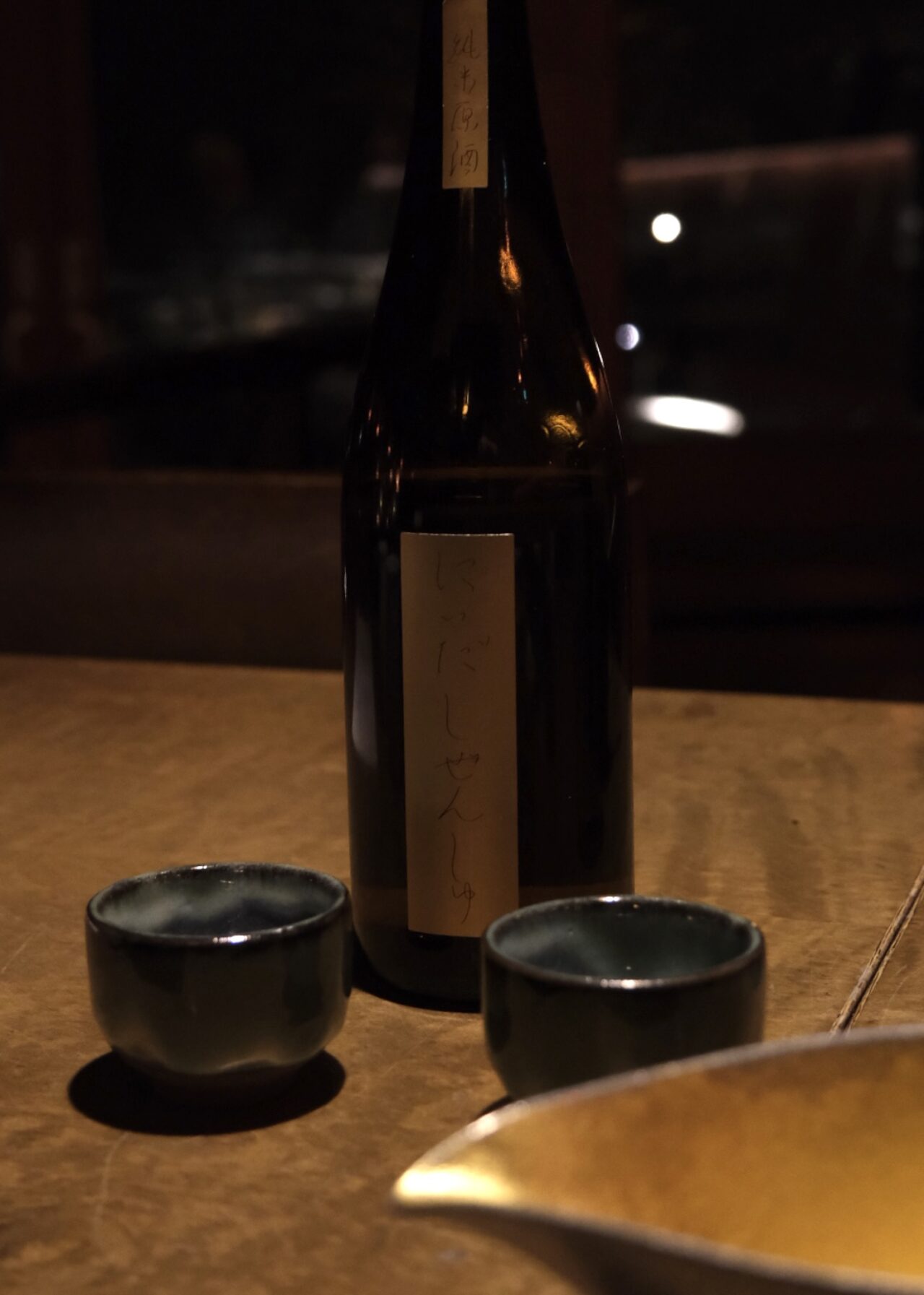
A highlight of the course was Chef Ishii’s Japanese take on European fondue, crafting a cheese fondue with miso and sake lees, where accompanying Hyogo-grown Kurobe beef, shiitake and romanesco were self-dipped into the bubbling mixture.
Kasuke’s sake selector Masato Maezawa heralds an excellent offering of regional sake that includes a tokubetsu junmai brewed by traditional kimoto method by local Nagano brewer Kurasawa, to Niida Honke from Fukushima — a superb pairing for Kasuke’s wild game dishes. Newly-appointed beverage manager Yuri Yoshizawa is also set to reimagine the listings for Spring 2024. The staff are attentive and sincere — exuding Japan’s incomparable sense of hospitality known as omotenashi. Haruna, our dining concierge for the evening exchanged warm conversation from her travels abroad, allowing us to make a memorable connection together and feel at ease. Breakfast at HOSHINOYA Karuizawa is equally monumentous, a spectacular spread that examples the luxury ryokan ethos of relaxation and rest, as guests may attend breakfast and move throughout the property entirely in their yukata cotton wear and geta sandals.
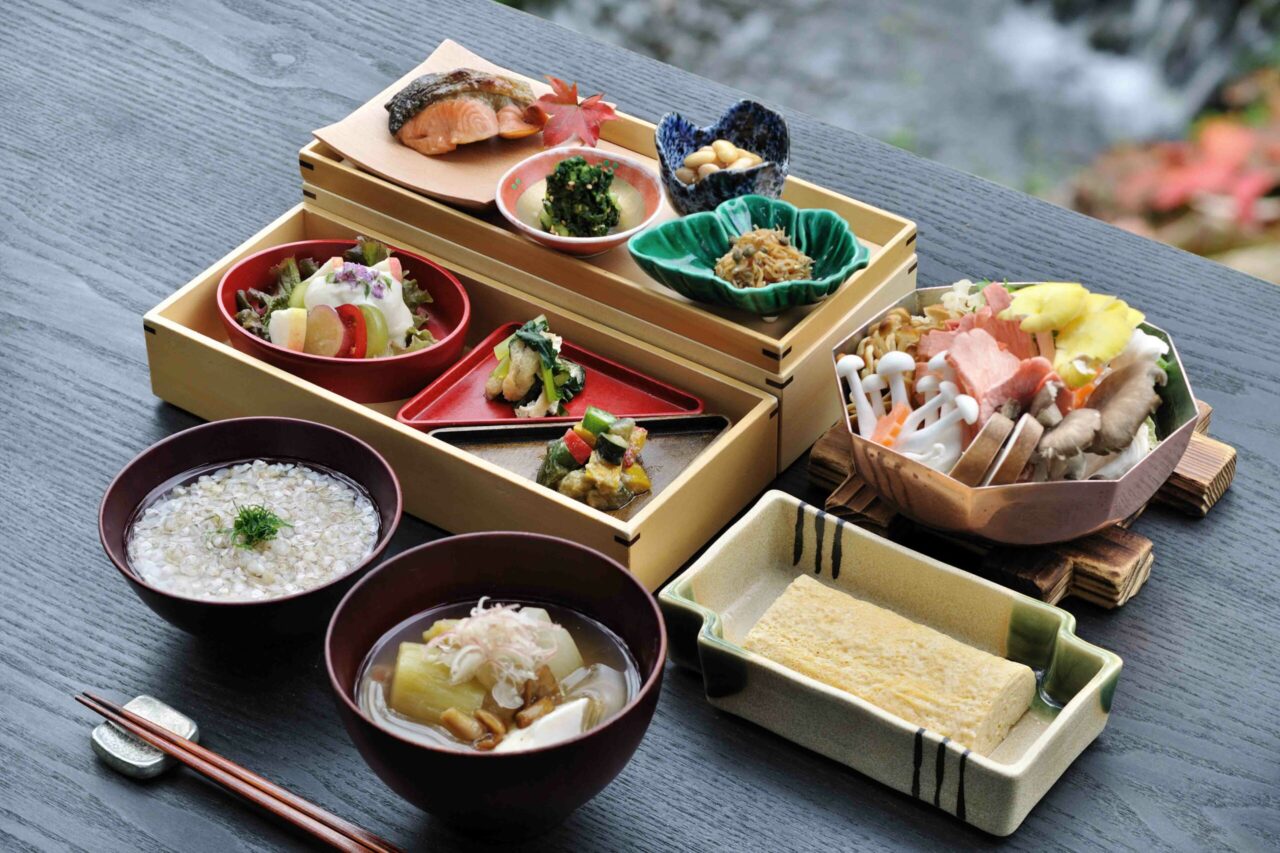
GARDEN
Over two hectares, the property’s garden is a site to behold. Smoothly intergrated into the landscape with pathways interweaving between guest rooms and on-site facilities, the carefully-considered design predominantly features native trees (wide leaf varieties rather than pine), counting over 80% maple trees on site alongside kuri (chestnut), sakura (cherry), kashiwa and shirakaba (silver birch). Designed by long term HOSHINOYA collaborator Hiroki Hasegawa, the landscape design was his inaugural project for the firm whilst enlisting Head Gardener Kenichi Sekiguchi as on-site guardian of the property.
Utilising the natural slope of the site and its existing topology, the garden features a main central terraced area inspired by rice fields. Hasegawa meticulous hand-laid the intricate stone work — utilising the light and porous local Asama stone — that supports each level, complimented by small ponds that descend down, creating picturesque miniature waterfalls. Now twenty years later, the terrace’s stones are covered in beautiful moss, a detail that Head Gardener Sekiguchi revels in. Sekiguchi explains his love for the garden and his work closely in line with the nuances of Japan’s changing seasons. ‘The movement of the sun is so important for me,’ he explains. ‘The sun will change the environment a lot, depending on the place where the sun comes out or not and depending on the seasons.‘ He continues, ‘Spring is when we begin work. Summer is our busiest period. Autumn is when things comes to an end. Winter is our time to rest.’ Sekiguchi adds that there are 100 known plant species site, along with hoonoki tree (beloved by Flying Squirrels), including over a century old tree and Designated National Treasure known as Hanahyotamboku.
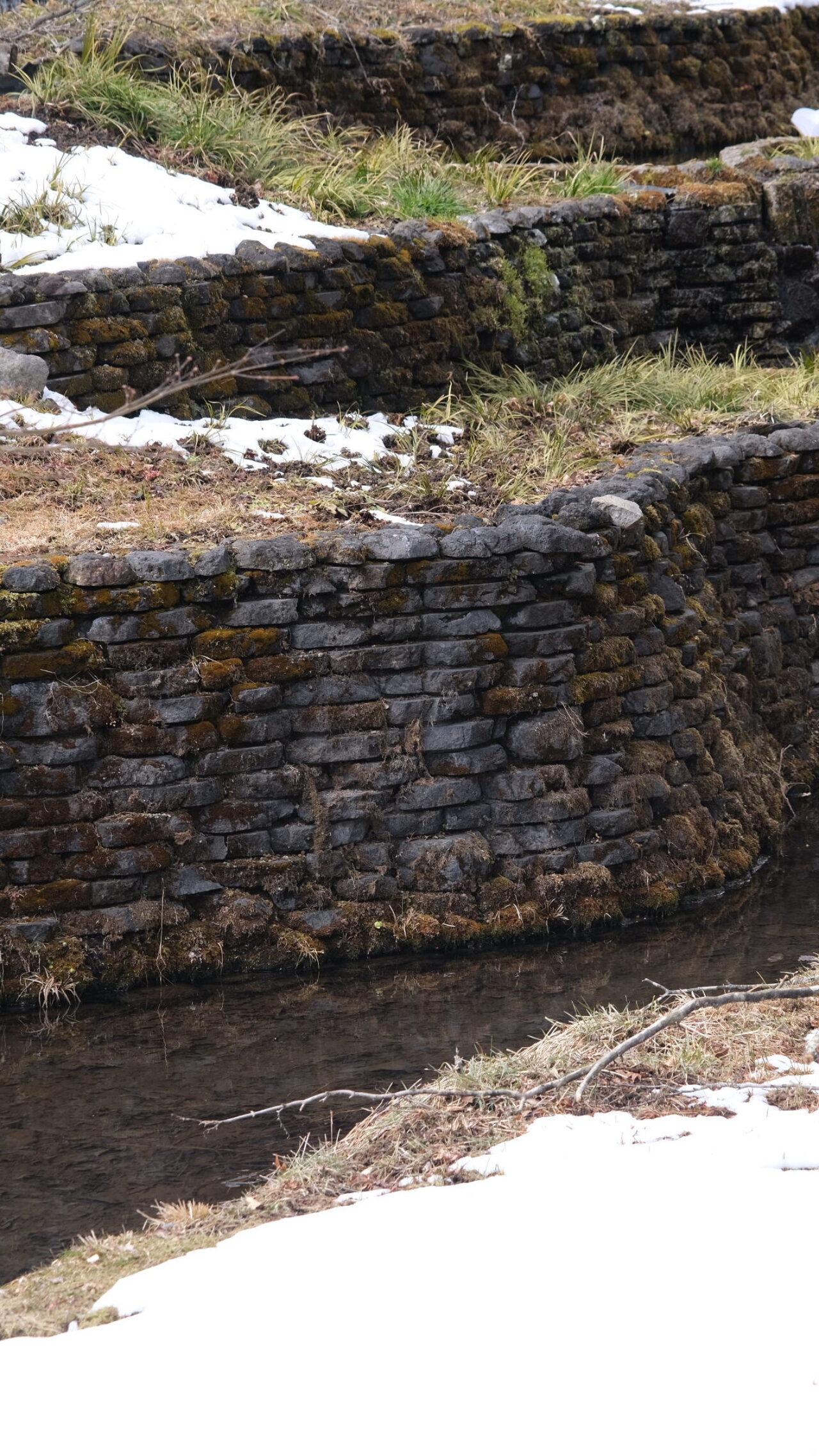

FOREST-SIDE CAFE & BAR
HOSHINOYA Karuizawa’s Forest-Side Cafe & Bar is located a short stroll from the main building. By day it is the reception area for the Picchio nature tour and in summer, plays host to the Picchio Ikari Cafe. At night it transforms into a bar only for guests, serving seasonal cocktails, local Nagano whiskeys such as Mars (produced by Hombo Shuzo) and Kurasawa whiskey (by the Nagano sake brewer), or Shochu with the sap of the local Shirakaba tree.
The building beautifully curves around the central pond, with a long curved singular cushioned lounge positioned to face the stunning view of nature. Intentionally, no music is played in the bar to encourage guests to observe the sounds of nature. Listening closely in winter, the gentle crackling of the fireplace is a comforting resonance whilst in summer, the sounds of frogs or a gentle breeze bring calm.
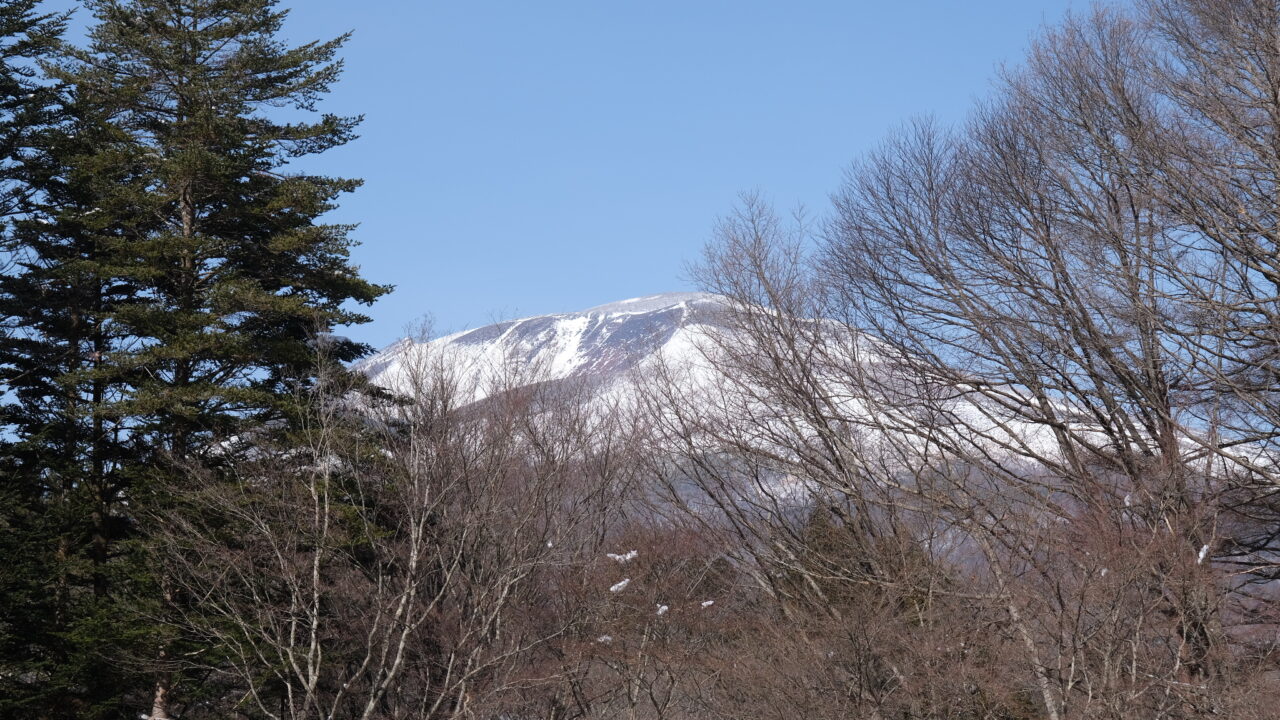
BIRD-WATCHING
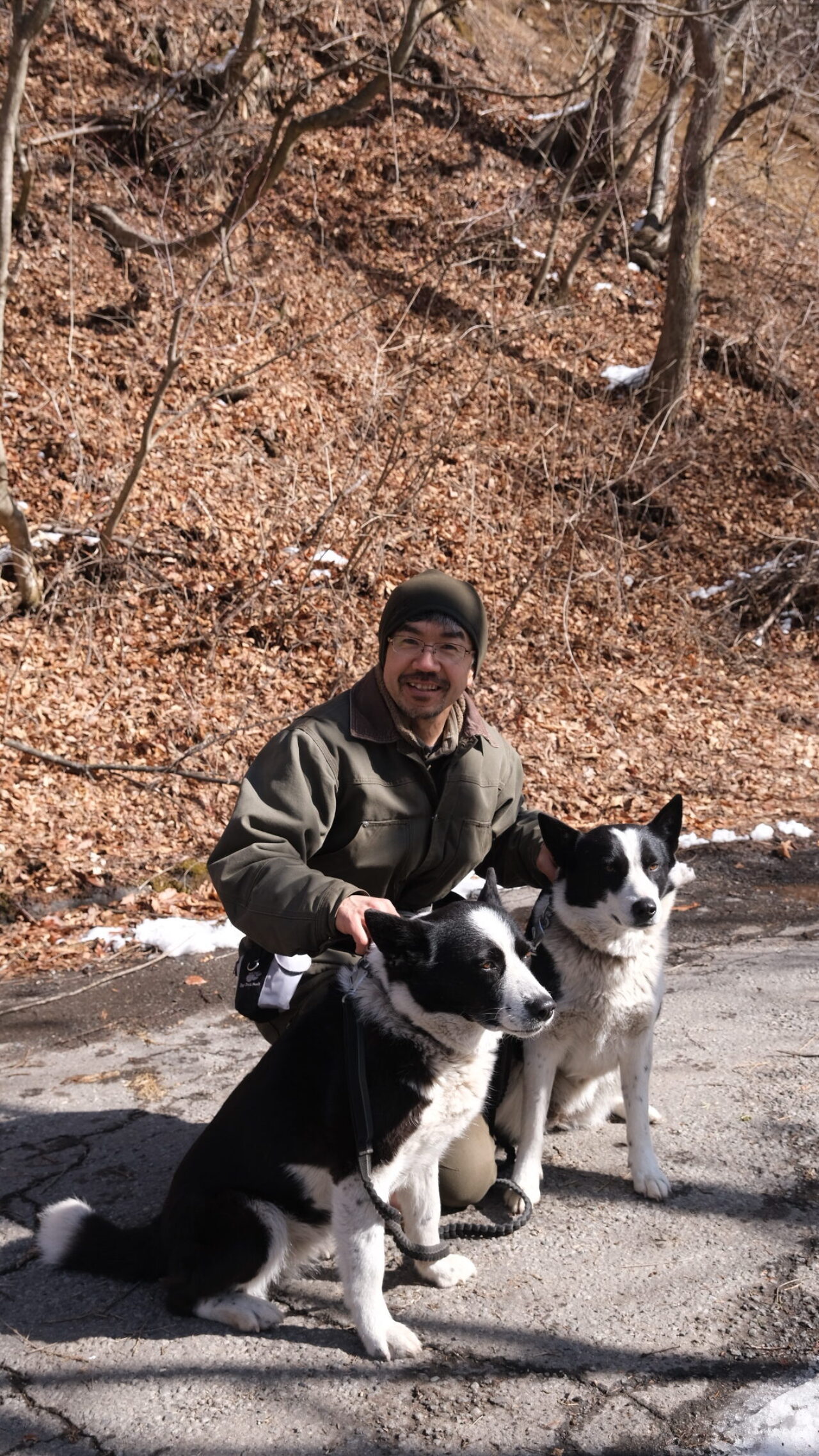

One of HOSHINOYA Karuizawa’s activities that both guests and visitors can attend to is Wild Bird Watching, an external activity organised by the Picchio Wildlife Research Centre who have been hosting Wildlife and nature tours in Japan for over 30 years. Tours depart from the Picchio Visitor Center (also known as the Forest-Side Cafe & Bar about a two-minute walk from HOSHINOYA Karuizawa), where participants are then taken through the untouched Wild Bird Sanctuary Forest to identify local bird species such as the Japanese long-tailed tit (Aegithalos caudatus) and native mountain plants such as Japanese spicebush (Lindera obtusiloba). The organisers also lead Japan’s Asiatic black bar conservation and their protection through an initiative with trained bear dogs established in 1998. Their aim is to create a harmonious environment with nature and urban environments.
HOSHINOYA Karuizawa’s expansive site allows for unlimited moments immersed in nature alongside excellent architecture and design creating a sense of discovery that is sure to leave lasting memories.
HOSHINOYA Karuizawa
2148 Nagakura, Karuizawa,
Kitasaku District, Nagano, Japan
For more Japan destinations, click here.
Text: Editor-In-Chief Joanna Kawecki
Images: As credited, Champ Creative for Champ Magazine

















